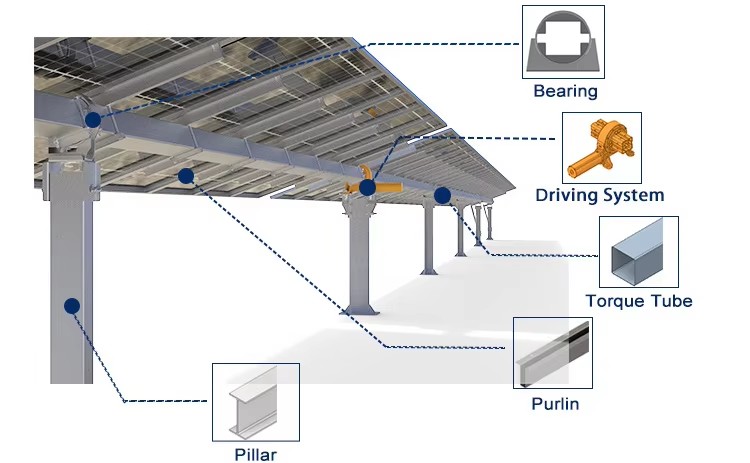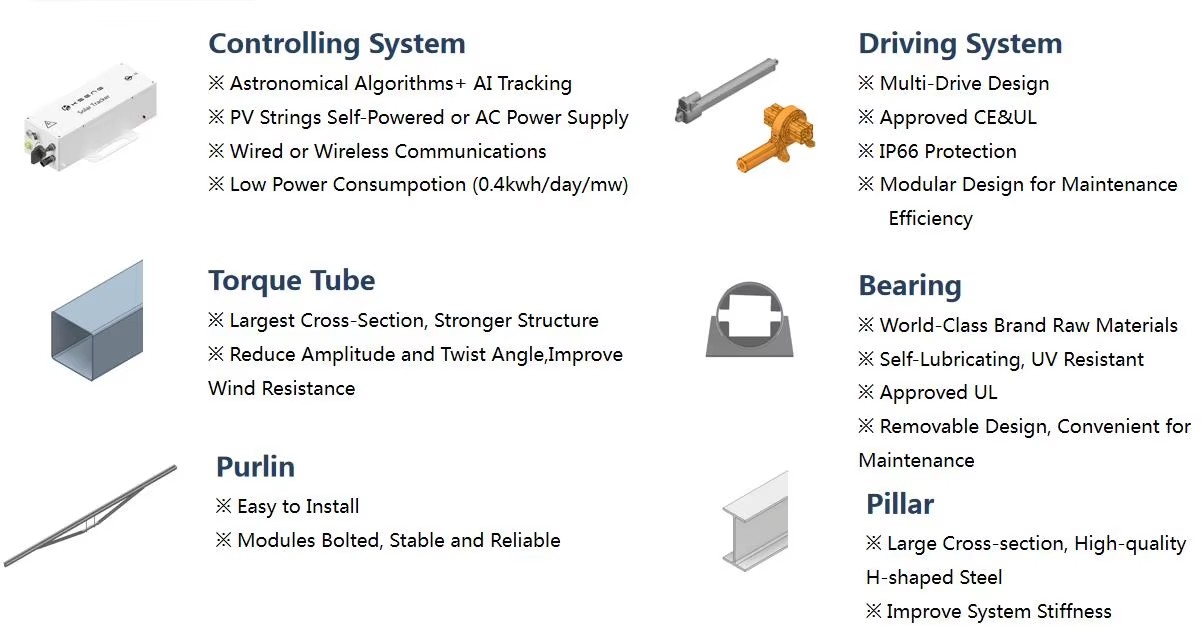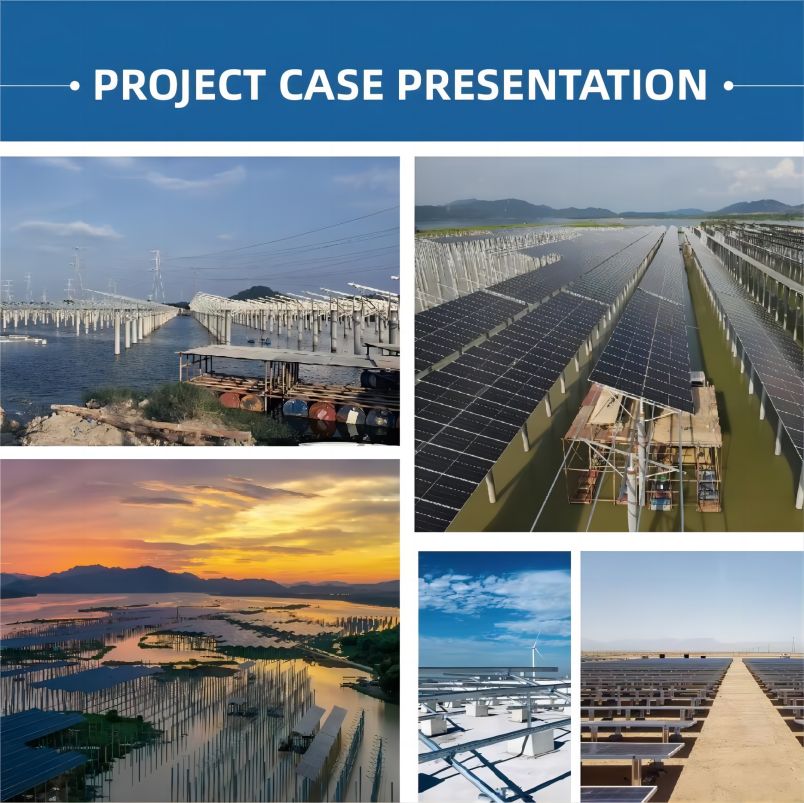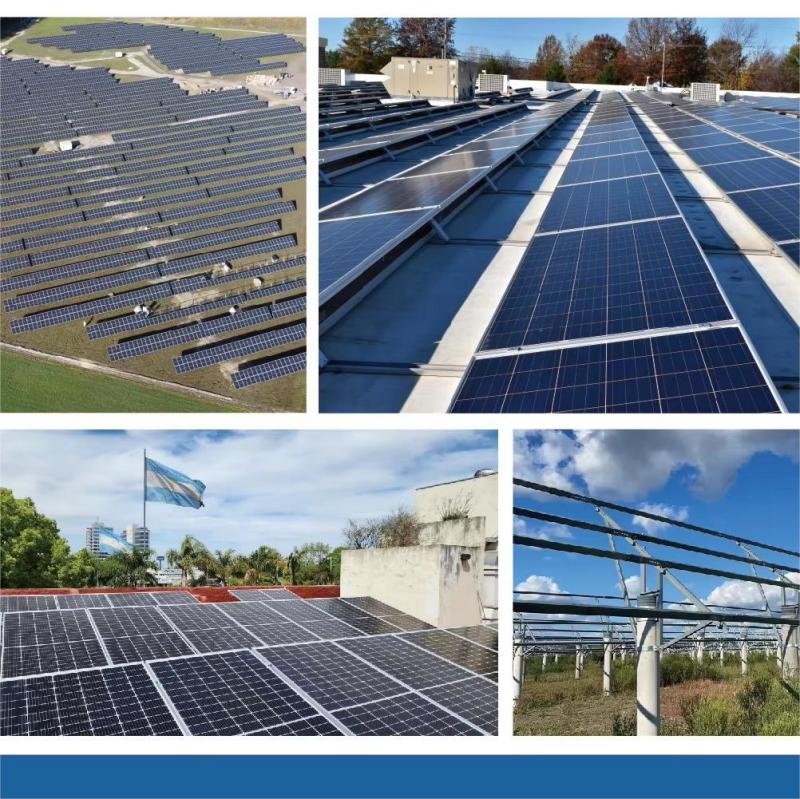Solar Tracker System
| SKYLINE TRACKER SPECIFICATIONS | |
|---|---|
| Tracking Type | Independent horizontal single-axis tracker |
| Tracking Range | 士 60° |
| Driving System | Slew drive, 28VDC motor |
| Modules per Tracker | Up to 90 modules per tracker |
| System Voltage | 1000 V or 1500 V |
| Ground Coverage Ratio | Typical ≥ 25% |
| Foundation Options | All foundation types |
| Terrain Adaption | Up to 20% N-S slope |
| Structure Material | Hot dipped galvanized/Pre-galvanized steel |
| Power Consumption | Typical 0.02kWh/day |
| Daily Energy Consumption | Powered by PV strings, back-up Li-ion battery |
| Standard Design Wind Speed | 105mph (47m/s) per ASCE7-10, higher wind load available |
| Module Supported | All commercially available modules |
| Operation Temperature | -20℃ – 60℃ (-30℃ – 60℃ Optional) |
| ELECTRONIC CONTROLLER SPECIFICATIONS | |
|---|---|
| Control System | 1 controller per tracker |
| Control Algorithm | Astronomical algorithms + Tilt sensor close loop |
| Tracking Accuracy | ≤ 2° |
| String-Powered | Yes |
| Backtracking | Yes |
| Communication Options | LoRa wireless /RS 485 cable |
| Night Position | Yes |
Climate change and environmental degradation have become growing concerns for all countries in the 21st century. World leaders, therefore, are attaching greater attention to the development of renewable energy sources to reduce negative impacts on the environment. Solar energy, one of the cleanest and most abundant renewable energy sources, is expanding rapidly across the globe and has fueled a spike in solar PV power generation.
As feed-in tariff continues to fall globally, solar developers, investors, and businesses find themselves under ever-rising pressure to obtain an economic model to maximize their solar project's return on investment (ROI).
Solar trackers significantly boost the amount of electricity through the constant orientation of the PV panels towards the sun for the whole day. There is no other single balance-of-system (BOS) component that can boost a PV system's performance like a tracker.
Rainbow trackers are solutions to high returns on investment and make solar projects economically profitable under cost pressure. In particular, Rainbow redundancy horizontal single-axis trackers are attractive solutions in terms of profitability and reliability. The standard horizontal single-axis tracker is suitable for relatively low latitude while horizontal single-axis tracker with tilted modules and tilt single-axis tracker are normally used for higher latitude.





















